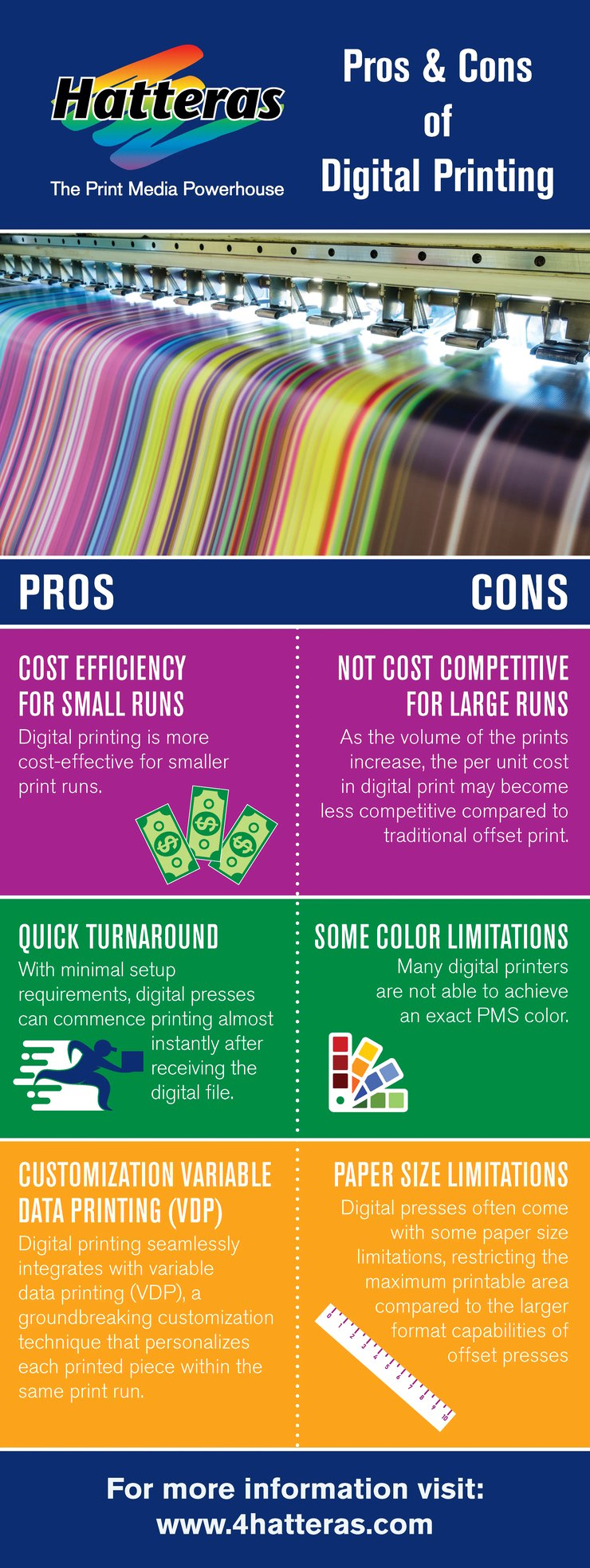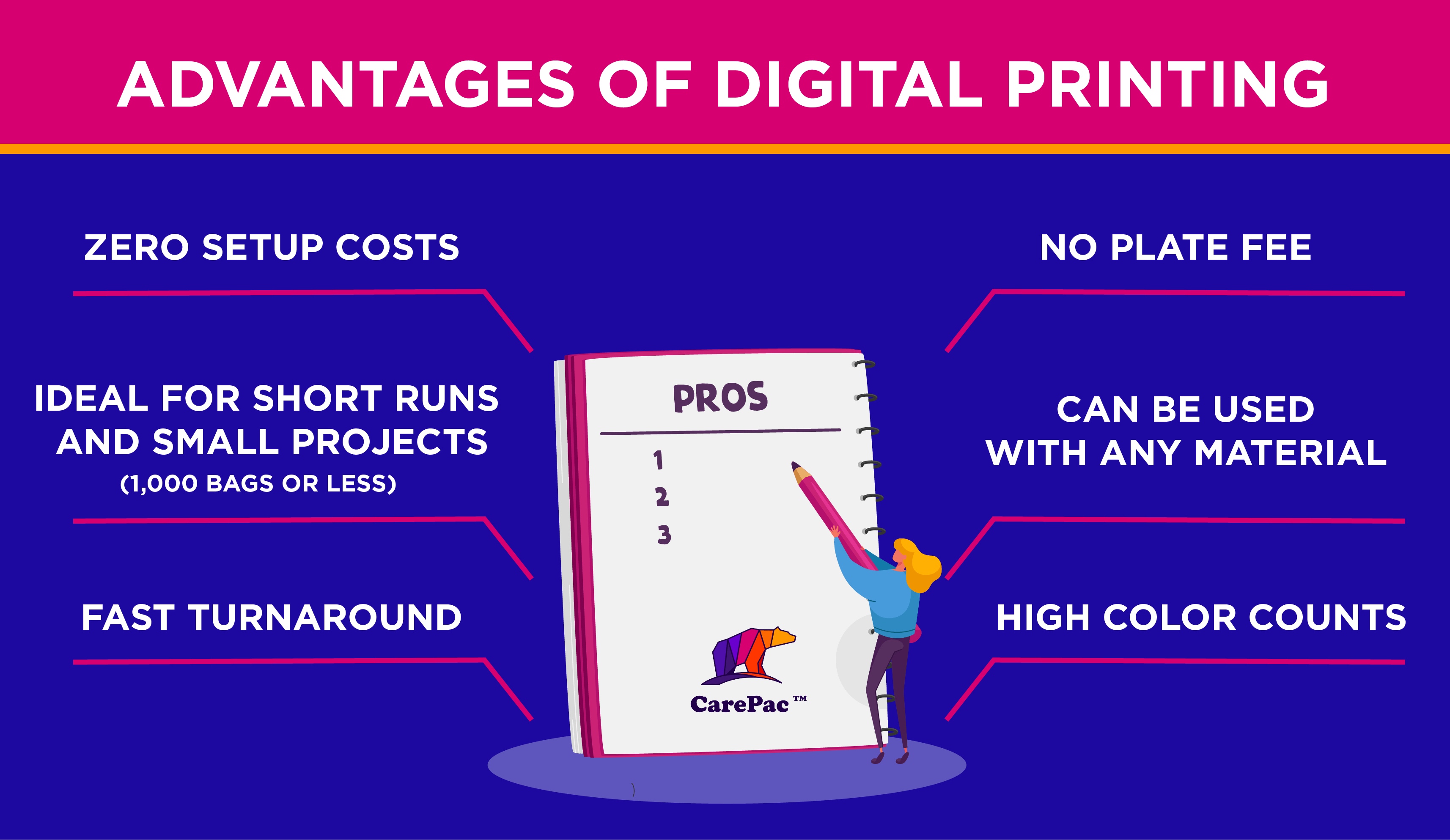An Unbiased View of Digital Printing
An Unbiased View of Digital Printing
Blog Article
7 Easy Facts About Digital Printing Explained
Table of ContentsAn Unbiased View of Digital PrintingNot known Incorrect Statements About Digital Printing The Single Strategy To Use For Digital PrintingThe 6-Minute Rule for Digital PrintingAbout Digital PrintingGetting The Digital Printing To Work
Variable information printing, such as direct mail with personalized codes and addresses, is preferably fit for electronic printing. Digital fast printing just requires four steps of layout, evaluation, printing and binding to get everything done. Digital quick printing has an unparalleled advantage: print on demand.According to PMMI, electronic printing enables brand names and manufacturers to react promptly to consumer demands while boosting the supply chain, decreasing warehousing cost and waste, and delighting in faster time to market. That all sounds great, yet exactly how does this technology do all that? The major differentiator of these innovations is that there are no set-up charges and no plates with electronic printing.
Getting The Digital Printing To Work
This results in quicker turn-around time and reduces cost when utilizing digital printing.
Digital printing is highly adaptable, so it's easy to make adjustments to the bundle style swiftly. It all goes back to the plates.
With conventional printing techniques, short-run printing is just not feasible. Due to the fact that a fantastic layout can make or damage your product, digital printing continually develops high-grade, clear and vibrant graphics each time.
Digital printing is the process of printing digital-based photos directly onto a range of media substratums. There is no need for a printing plate, unlike with countered printing. Digital data such as PDFs or desktop posting files can be sent straight to the electronic printing press to publish on paper, picture paper, canvas, textile, synthetics, cardstock and other substratums.
Not known Facts About Digital Printing
According to PMMI, digital printing enables brand names and producers to react quickly to client needs while boosting the supply chain, decreasing warehousing cost and waste, and delighting in faster time to market. That all audios wonderful, yet exactly how does this innovation do all that? The significant differentiator of these innovations is that there are no set-up fees and no plates with electronic printing.
According to Wikipedia, the best distinction between digital printing and traditional methods such as lithography, flexography, gravure, site link or letterpress is that there is no requirement to replace printing plates in digital printing, whereas in these analog printing approaches the plates are repeatedly replaced. This results in quicker turnaround time and lowers expense when using electronic printing.

Things about Digital Printing
With standard printing approaches, short-run printing is simply not possible. Due to the fact that a great design can make or break your product, electronic printing consistently creates top quality, clear and vibrant graphics each time.

According to PMMI, electronic look at this website printing enables brands and manufacturers to react rapidly to customer demands while enhancing the supply chain, minimizing warehousing expense and waste, and enjoying faster time to market. That all noises excellent, however exactly how does this modern technology do all that? The major differentiator of these modern technologies is that there are no set-up charges and no plates with electronic printing.
Little Known Facts About Digital Printing.
According to Wikipedia, the greatest distinction in between electronic printing and standard techniques visite site such as lithography, flexography, gravure, or letterpress is that there is no demand to change printing plates in digital printing, whereas in these analog printing approaches the plates are consistently changed. This leads to quicker turn-around time and lowers price when using digital printing.
Digital printing is highly flexible, so it's simple to make changes to the plan layout quickly. It all goes back to the plates.

The Best Guide To Digital Printing
Digital printing is the process of printing digital-based pictures directly onto a range of media substrates. There is no demand for a printing plate, unlike with balanced out printing. Digital documents such as PDFs or desktop computer publishing files can be sent straight to the digital printing machine to print on paper, picture paper, canvas, material, synthetics, cardstock and various other substrates.
Report this page